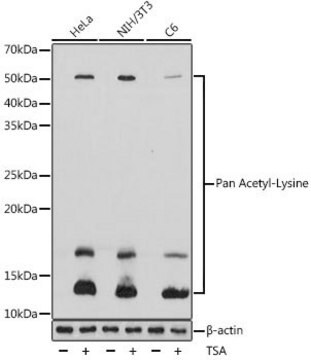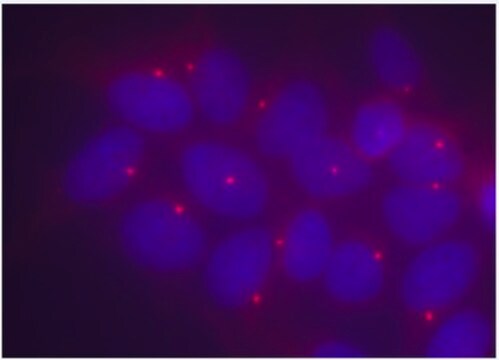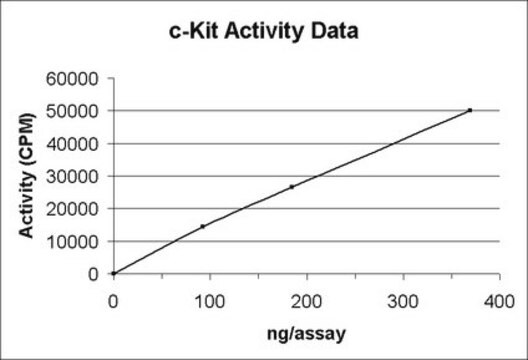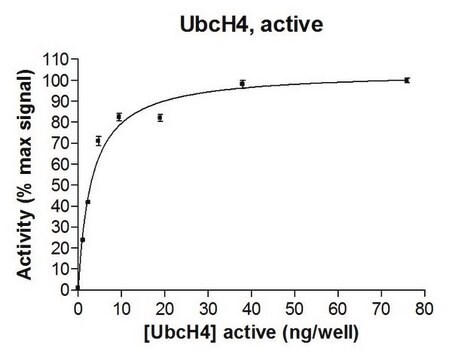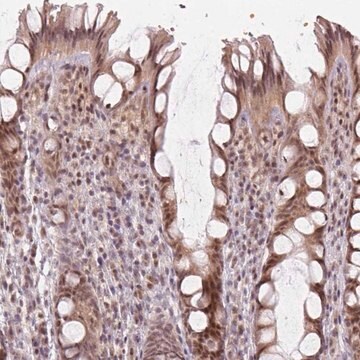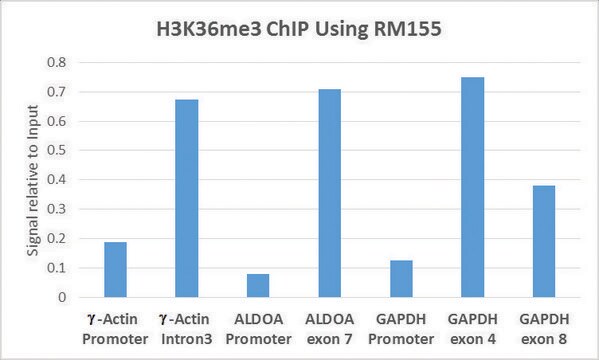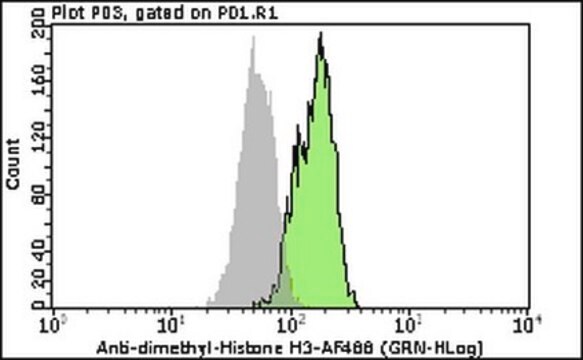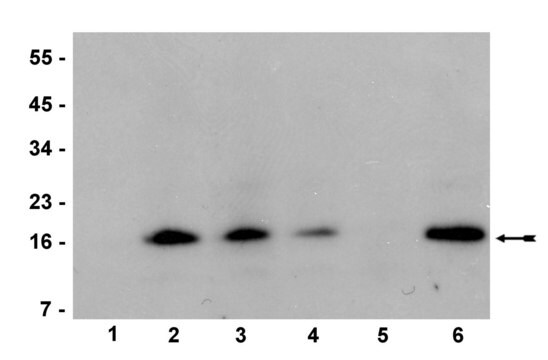17-10032
ChIPAb+ Trimethyl-Histone H3 (Lys36) - ChIP Validated Antibody and Primer Set, rabbit monoclonal
from rabbit
Synonym(s):
H3K36me3, Histone H3 (tri methyl K36), H3 histone family, member T, histone 3, H3, histone cluster 3, H3
About This Item
Recommended Products
biological source
rabbit
Quality Level
antibody form
purified immunoglobulin
clone
monoclonal
species reactivity
human, chicken
manufacturer/tradename
ChIPAb+
Upstate®
technique(s)
ChIP: suitable
cell based assay: suitable
dot blot: suitable
immunoprecipitation (IP): suitable
western blot: suitable
isotype
IgG
NCBI accession no.
UniProt accession no.
shipped in
dry ice
General description
The ChIPAb+ Trimethyl-Histone H3 (Lys36) set includes the Trimethyl-Histone H3 (Lys36) antibody, a negative control antibody (normal rabbit IgG), and qPCR primers which amplify a 147 bp region of human BDNF intron. The Trimethyl-Histone H3 (Lys36) and negative control antibodies are supplied in a scalable "per ChIP" reaction size and can be used to functionally validate the precipitation of Trimethyl-Histone H3 (Lys36)-associated chromatin.
Specificity
Immunogen
Application
Sonicated chromatin prepared from HeLa cells (1 X 106 cell equivalents per IP) were subjected to chromatin immunoprecipitation using 2 µg of either Normal rabbit IgG or 2 µL Anti-trimethyl-Histone H3 (Lys36) and the Magna ChIP A Kit (Cat. # 17-610). Successful immunoprecipitation of trimethyl-Histone H3 (Lys36) associated DNA fragments was verified by qPCR using ChIP Primers, BDNF Intron as a positive locus, and GAPDH promoter primers as a negative locus (Please see figures). Data is presented as percent input of each IP sample relative to input chromatin for each amplicon and ChIP sample as indicated.
Please refer to the EZ-Magna ChIP A (Cat. # 17-408) or EZ-ChIP (Cat. # 17-371) protocol for experimental details.
Western Blot Analysis and Peptide Inhibition:
Representative lot data.
Recombinant Histone H3 (Catalog # 14-411, lane 1) and chicken Core Histones (Catalog # 13-107, lane 2) were resolved by electrophoresis, transferred to nitrocellulose and probed with antitrimethyl-Histone H3 (Lys36) (1:1000 dilution) or anti-trimethyl-Histone H3 (Lys36) pre-adsorbed with 1mM histone H3 peptides containing the following modifications:
Lane 3: monomethyl-lysine 36
Lane 4: dimethyl-lysine 36
Lane 5: trimethyl-lysine 36
Lane 6: unmodified
Proteins were visualized using a goat anti-rabbit secondary antibody conjugated to HRP and a chemiluminescence detection system. (Please see figures).
Peptide Dot Blot Analysis:
Representative lot data.
A dilution series of Histone H3 peptides containing the following modifications was made:
Column 1: unmodified
Column 2: monomethyl-lysine 36
Column 3: dimethyl-lysine 36
Column 4: trimethyl-lysine 36
2 μL of each dilution was spotted onto a PVDF membrane and probed with antitrimethyl-Histone H3 (Lys36), (1:1000 dilution).
Peptides were visualized using a goat anti-rabbit secondary conjugated to HRP and a chemiluminescence detection system (Please see figures).
Epigenetics & Nuclear Function
Histones
Packaging
Quality
Sonicated chromatin prepared from HeLa cells (1 X 106 cell equivalents per IP) were subjected to chromatin immuno-precipitation using 2 µg of either Normal Rabbit IgG or 2 µL Anti-trimethyl-Histone H3 (Lys36) and the Magna ChIP® A Kit (Cat. # 17-610).
Successful immunoprecipitation of trimethyl-Histone H3 (Lys36) associated DNA fragments was verified by qPCR using ChIP Primers, BDNF Intron (Please see figures).
Please refer to the EZ-Magna ChIP A (Cat. # 17-408) or EZ-ChIP (Cat. # 17-371) protocol for experimental details.
Target description
Physical form
Normal Rabbit IgG. One vial containing 125 µg Rabbit IgG in 125 µL of storage buffer containing 0.05% sodium azide. Store at -20°C.
ChIP Primers, BDNF Intron. One vial containing 75 μL of 5 μM of each primer specific for human BDNF intron. Store at -20°C.
FOR: ACCCCAACCTCTAACAGCATTA
REV: TGTCTCTCAGCAGTCTTGCATT
Storage and Stability
Analysis Note
Includes negative control rabbit IgG antibody and primers specific for human BDNF Intron.
Legal Information
Disclaimer
Storage Class
10 - Combustible liquids
Certificates of Analysis (COA)
Search for Certificates of Analysis (COA) by entering the products Lot/Batch Number. Lot and Batch Numbers can be found on a product’s label following the words ‘Lot’ or ‘Batch’.
Already Own This Product?
Find documentation for the products that you have recently purchased in the Document Library.
Our team of scientists has experience in all areas of research including Life Science, Material Science, Chemical Synthesis, Chromatography, Analytical and many others.
Contact Technical Service